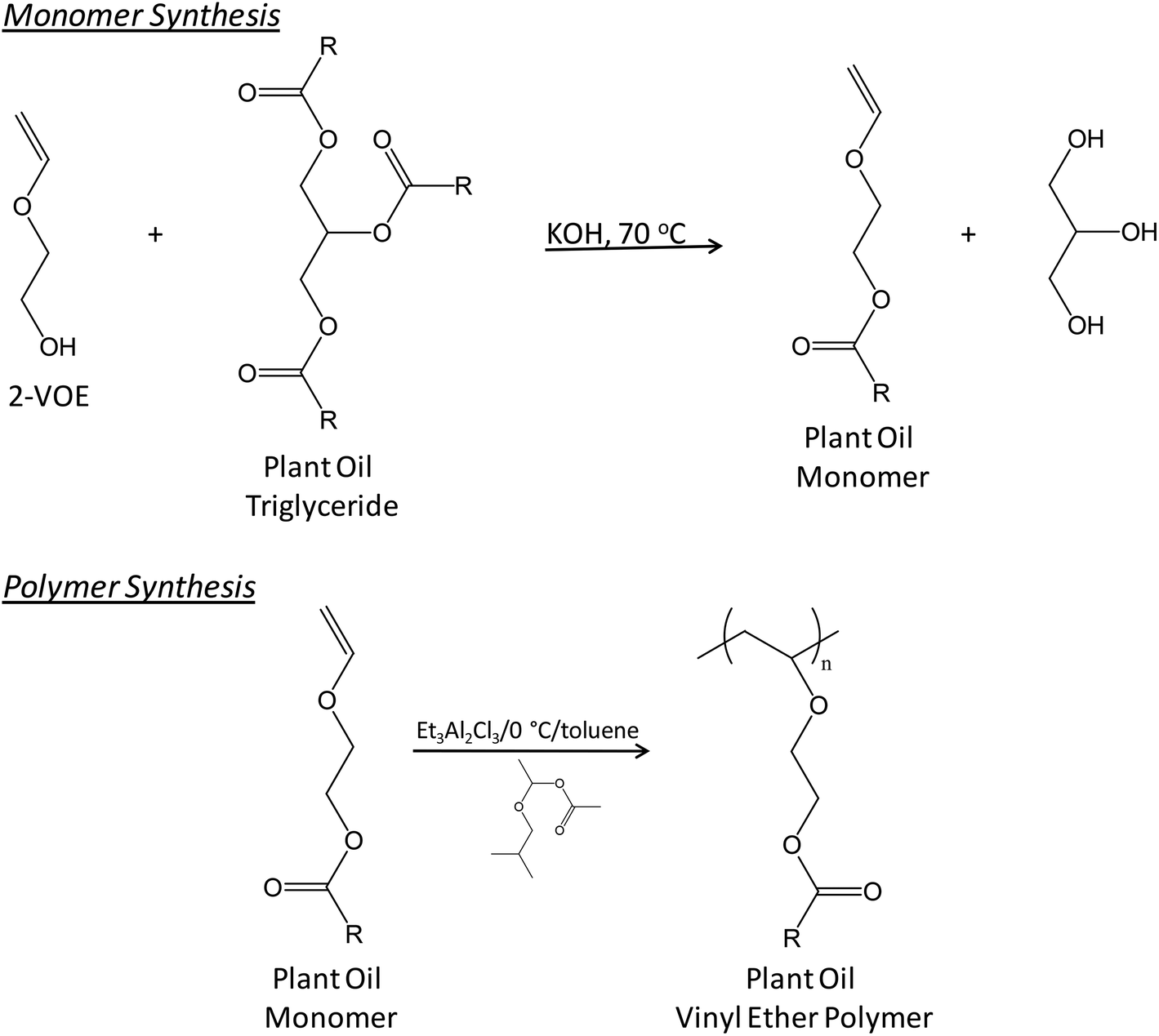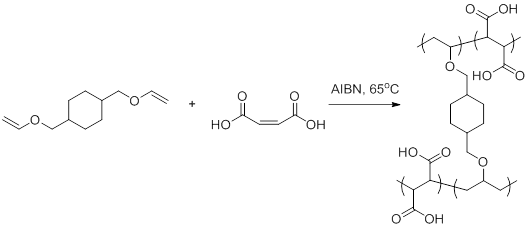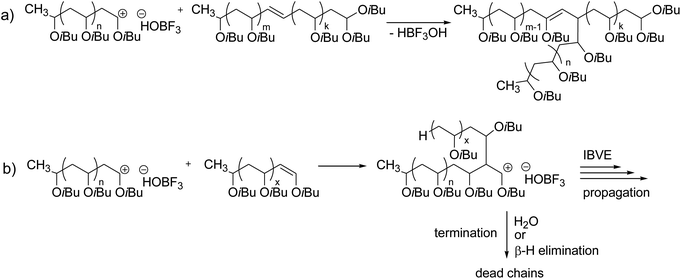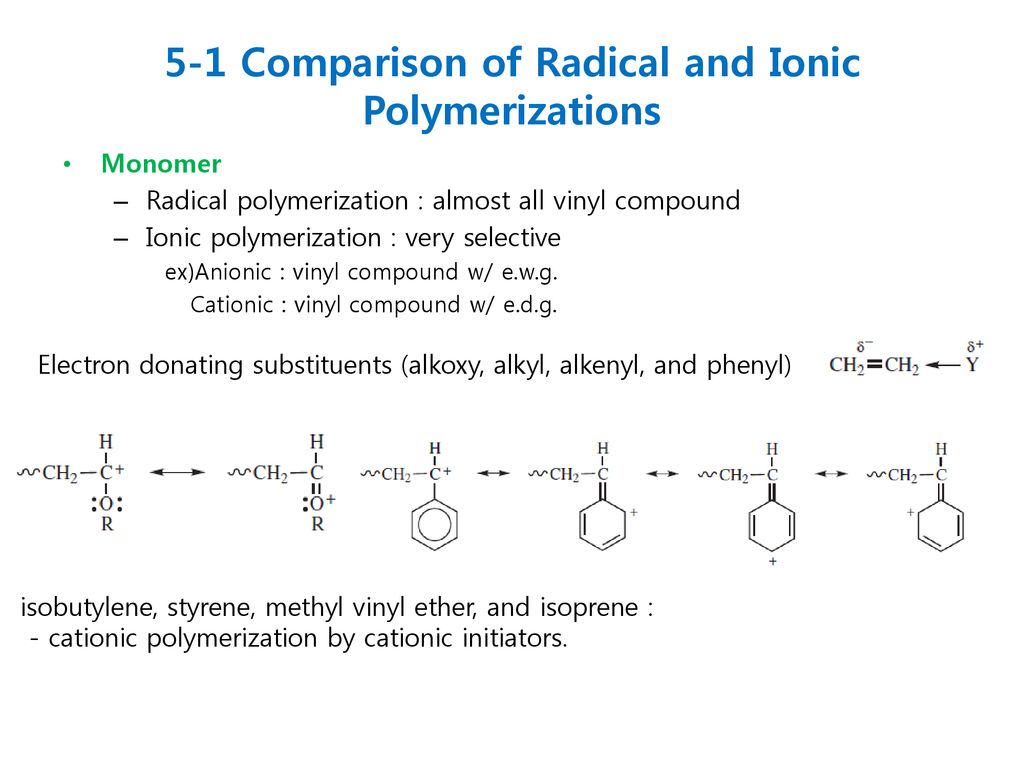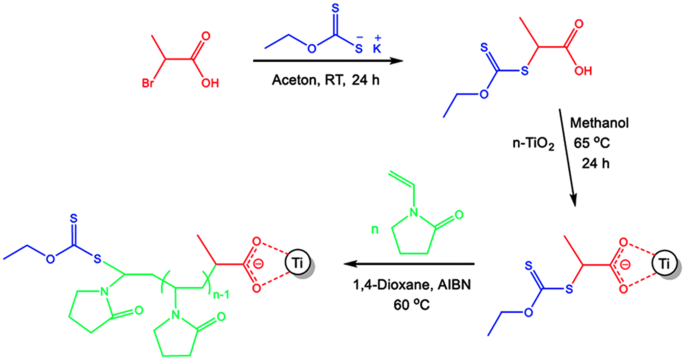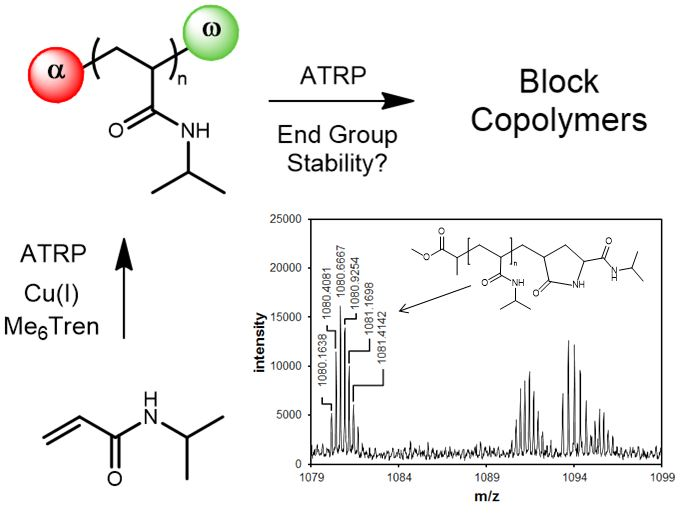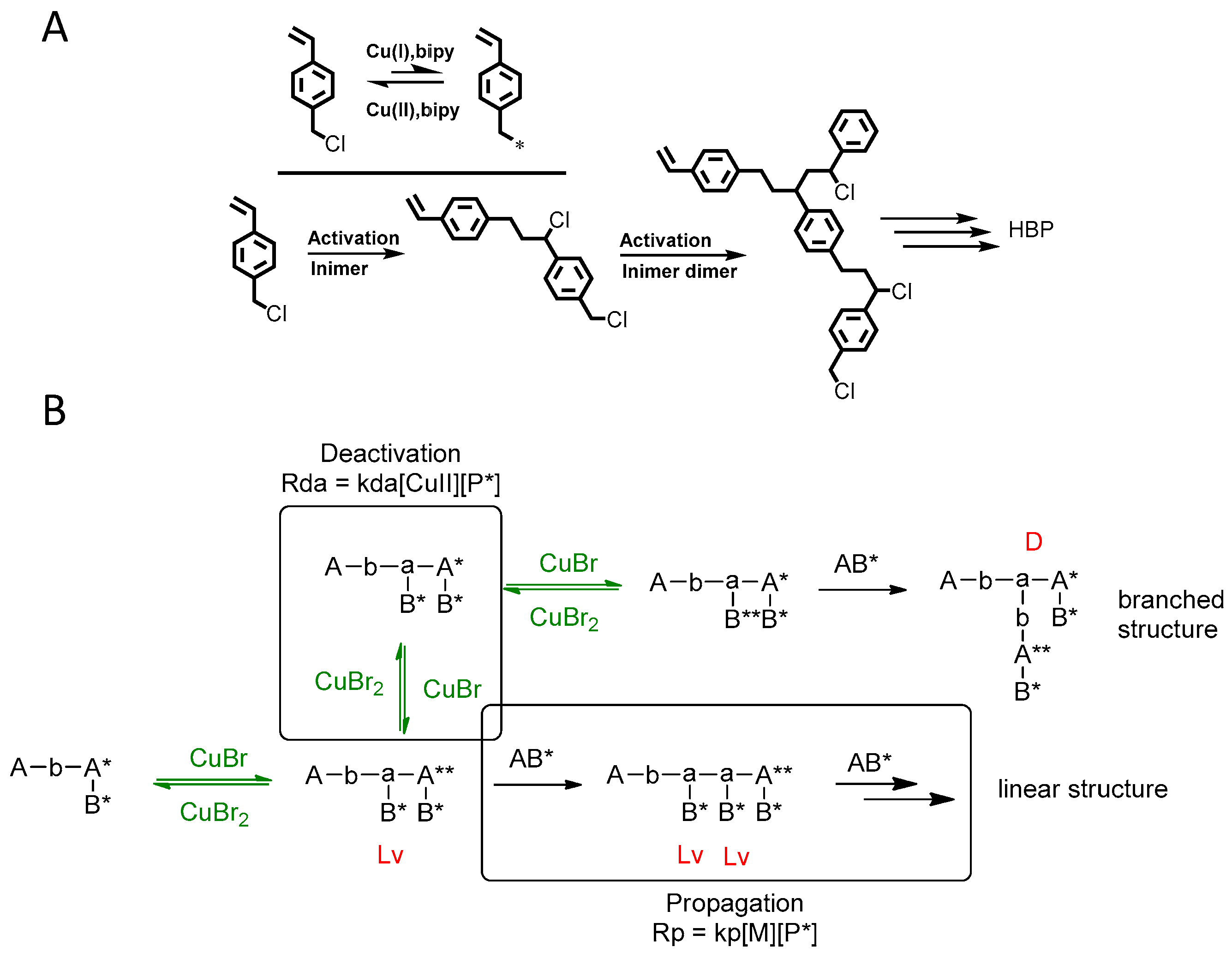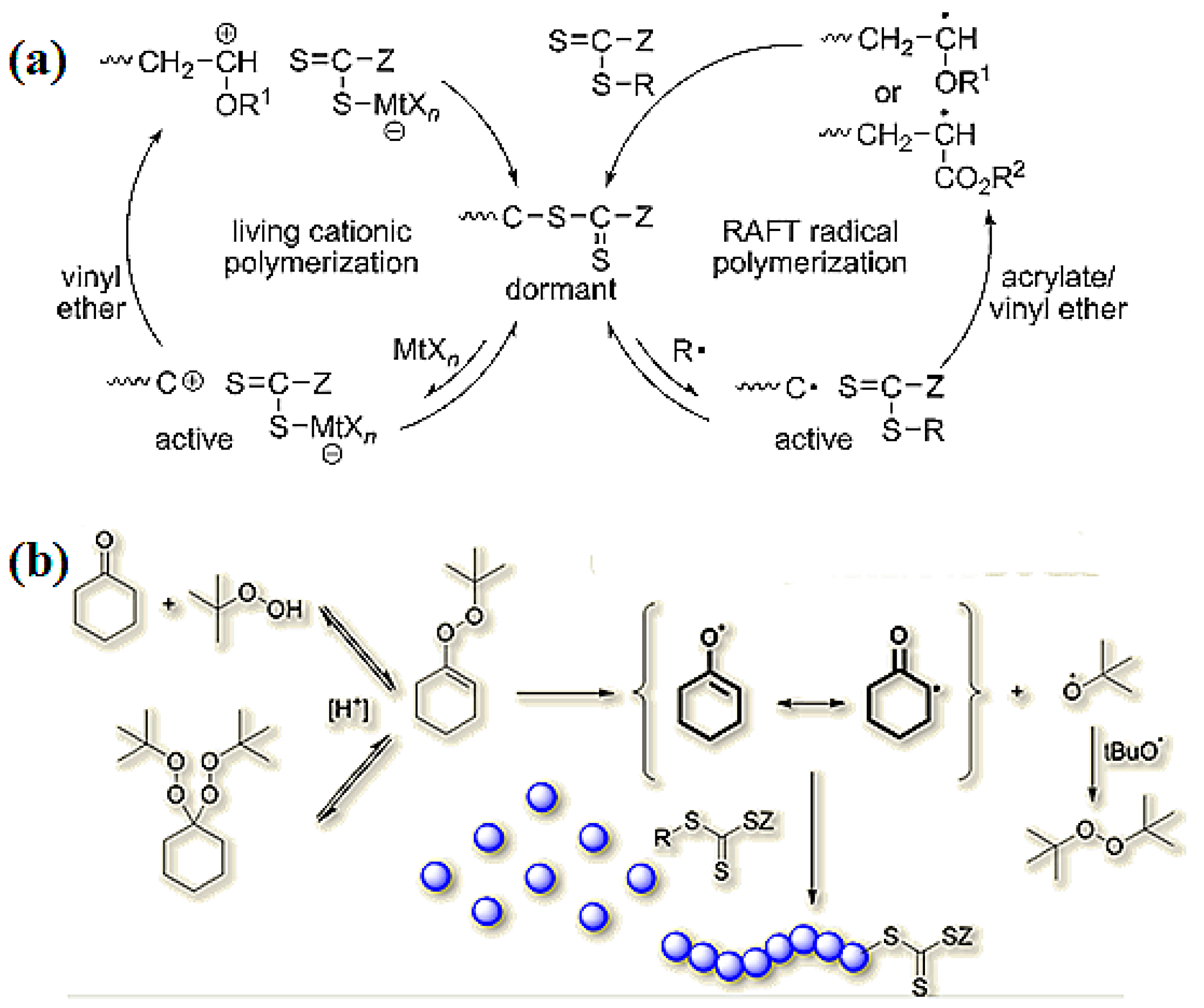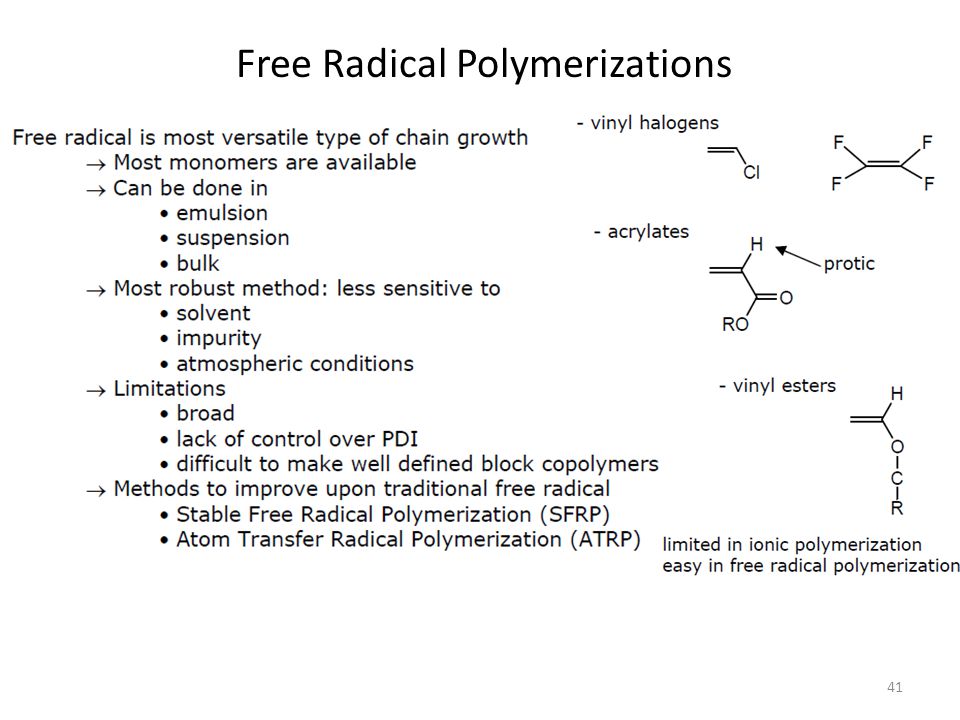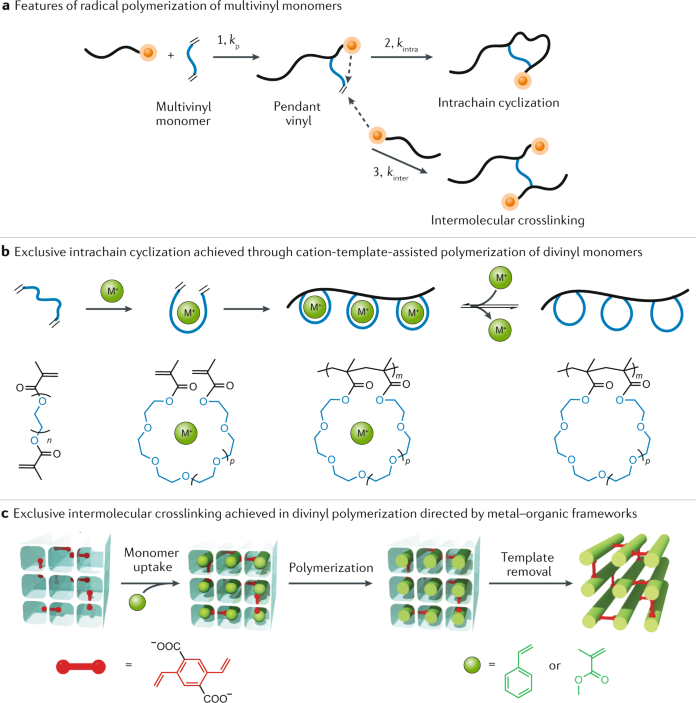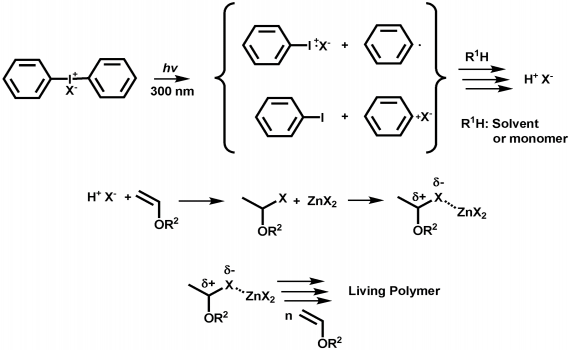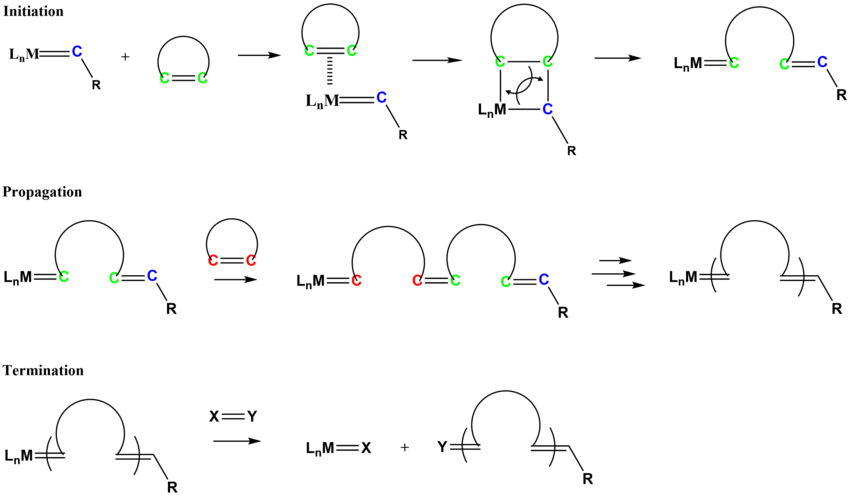Vinyl Ether Radical Polymerization

A new photoinitiating system for living cationic polymerization of vinyl ethers is reported.
Vinyl ether radical polymerization. For example the state of the art method uses a phenoxide ligated titanium complex to achieve 92 meso diads m in the polymerization of iso butyl vinyl ether ibve. In order to overcome the challenge of direct radical polymerization of vinyl ethers commercial hydroxy functional vinyl ethers such as 2 hydroxyethyl vinyl ether heve were subjected to free radical polymerization generating. This method however is highly sensitive to monomer structure and achieved only 76 m and 64 m in the case of n butyl bve and ethyl vinyl ether eve respectively. A novel uv curing vinyl ether lcs with a wide temperature range was developed by mixturing various vinyl ether lc monomers.
For the divinyl ether of triethylene glycol the chain reaction was shown to develop rapidly and extensively with kinetic chain lengths on the order of 10 000. The pdvlc pdcvlc and f pdcvlc qds films were prepared by dual step polymerization of acrylate monomers radical polymerization and vinyl ether lc monomers cationic polymerization. Copolymerization components include vinyl chloride vinyl acetate acrylic metacrylic acids and their ethers maleic anhydrides fluorinated olefin such as f2c cf2 and. Macromolecules 2020 53 5 1536 1542.
Unprecedented controlled radical vinyl polymerization crp of vinyl ethers using reversible addition fragmentation chain transfer raft polymerization is reported. No anionic or radical polymerizations give high polymers from vinyl ethers except for the alternating radical copolymerization with an electron deficient monomer. The resulting polymers are produced under mild and controlled conditions and are useful in adhesives and coatings as well as in other uses such as for polymer electrolytes in batteries and for viscosity. Provided is a method for the polymerization of vinyl ethers catalyzed by complexes of a lithium salt and a polyether.
A preferred complex is a complex of lithium tetrafluoroborate and a glyme. Thienyl chloride initiated living cationic polymerization. A general and efficient access toward terminally functionalized poly vinyl ether s. The product is used as low viscosity and fast curing monomers in cationic polymerization applications and as low viscosity monomers in radical polymerization applications.


